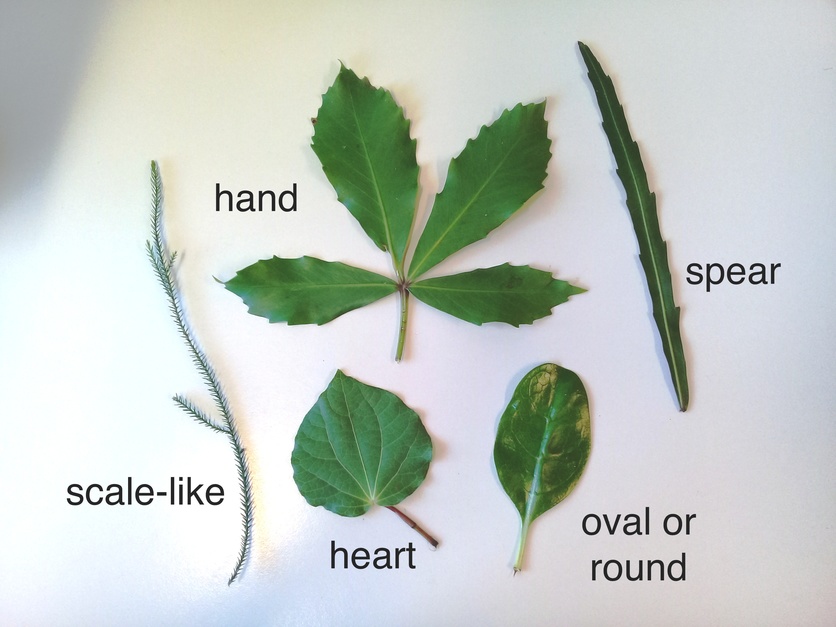Identifying native plants can be tricky! Scientists base their decisions about identifying, naming and classifying plants on a variety of features.
All plants have certain characteristics that make them different from the other kingdoms of organisms. Within the plant kingdom, plants are classified as belonging to one of several major groups.
The article What is a plant? provides more detailed information about the features of plants in general and about some of the characteristics used for classification into different groups.
To identify an unknown plant, the first step is deciding which of the major groups it belongs to. To do this, the following questions might be helpful:
- Is the plant vascular or not? Vascular plants have specialised tissues called xylem and phloem. These link all parts of the plant, transporting water, nutrients and manufactured food around, and also forming part of the structural support system.
- Does the plant produce seeds or not? Plants reproduce by producing either seeds or spores. Seed-bearing plants include both cone-bearing and flowering plants.
Using observation to identify plants
Plants that have seeds are often the most difficult to identify because of their wide variety. Leaves and bark are most commonly used for identification of New Zealand trees as they are available year round. This is not necessarily the case in other parts of the world where there are high proportions of deciduous trees, but New Zealand trees are mostly evergreen. Most of the reference materials available to support plant identification rely on the observation of leaves and looking at their arrangement on the stem. The location and form (shape) of the plant can also be used to provide identifying clues.
Leaves
The shape, size and other surface characteristics of leaves are often the first features used to narrow down the possibilities when looking at an unknown plant.
The leaves of native New Zealand plants vary hugely in shape, size, colour and texture. As well as these characteristics, the margins (edges) of the leaf are also used to identify plants – for example, whether the margin is smooth, toothed or serrated. Some leaves such as kōwhai and Pseudopanax spp. have compound leaves and are composed of several leaflets.
Leaf variability is a characteristic of New Zealand plants. Even leaves from the same species can vary greatly in shape and size, depending on the environment the plant is growing in and what stage of life the plant is in. Many of our mature plants have quite different foliage from their juvenile stages. This variability is one reason why other characteristics are also used to correctly identify unknown plants.
Leaf arrangement
The arrangement of the leaves on a stem is another key feature that is used to identify plants. Leaves are generally arranged either alternately along the stem or opposite each other.
Bark and trunk
The texture and colour of bark is another useful identifying feature. Often leaves may be too far up a tree for you to easily see them, in which case looking closely at the bark can provide clues for identification. Whether the tree has buttress roots, a straight or gnarled (lumpy) trunk, low branches or single or multiple trunks/stems are all additional clues.
Flowers, berries and cones
Flowers, berries and cones are also used to identify plants and to make distinctions between species. These are only available seasonally, making them less useful year round. Botanists generally use flowers as key identifiers for classification.
Many of our native trees are dioecious (they have flowers on separate male and female plants), and this must also be taken into account when looking at an unknown plant. Some species often have slight variations between the male and female plants.
DNA
Increasingly, DNA analysis is being used to make distinctions between varieties of plants at a genetic level. These differences can’t always be observed using more traditional methods. The genetic investigations are providing a deeper understanding of the evolution of plant species and the relationships between them.
Nature of science
This article encourages practice in the skills of observation, collecting data, comparing sources of information, synthesising evidence to observe patterns and making decisions about plant classification based on observational evidence.
Activity ideas
Plant observation and classification activities include Making a life-size leaf collection and Native plant leaves – DIY classification system.
There are also several activities focusing on observation that can easily be adapted for this context. They include Developing observation skills in younger students and Observation – learning to see.
Use this suite of activities to collect, observe and plant kōwhai seeds.
Related content
Useful articles for further reading include:
Useful links
There is a range of useful resources to support the identification of native plants. These include books and field guides by authors such as Andrew Crowe, John Salmon and John Dawson. Some of these include life-size images of common species and useful classification keys.
Websites such as Manaaki Whenua – Landcare Research and Department of Conservation and phone apps such as Flora Finder (by Otago University’s Botany Department) and Coprosma key provide quick online reference material.
The Department of Conservation also has a suite of ecology resources including Experiencing native trees in your green space.





